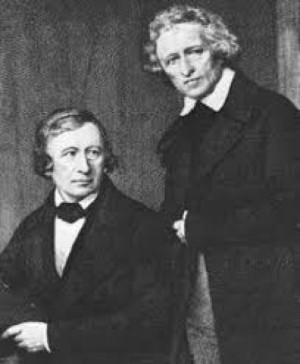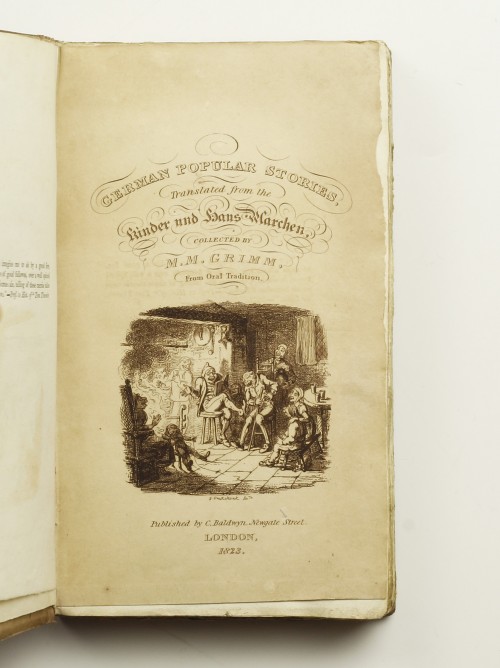The eldest of nine children, Jacob Ludwig Carl Grimm was born in Hanau Germany in 1785, and his younger brother Wilhelm Carl a year later. The early death of their father plunged the family into poverty and forced the two brothers to assume the adult responsibilities of caring for their siblings when still only children themselves. The close bond between the brothers remained throughout their lives and they rarely strayed far from each other, either in their personal or professional lives.
The brothers shared a love of folk lore, and with the rise of the German Romantic Movement and a renewed interest in popular folk culture, they decided to collect the stories which until then had only existed in the oral tradition. They published their first collection of fairy tales in 1812 entitled Kinder- und Hausmärchen (Children’s and Household Tales) which contained 86 stories. The first English translation appeared in 1823 and was also the first to be illustrated, by George Cruikshank. The tales held a great appeal to children and adults alike and is regarded as the first illustrated children’s book in the modern sense. The tales were gathered by the brothers over a period of years, taken from oral renditions of folk and fairy tales. They include some of the best known fairy tales in existence, such as Hansel and Grethel, The Frog Prince, Rumplestiltskin, Little Red Riding Hood and Rapunzel.
The first appearance of Grimm's fairy tales with drawings by Cruikshank
Two years later they brought out a second volume containing a further 70 tales, and then continued to add to the collection until by the time Wilhem died in 1859 they had published over 200 different stories. Grimm's "fairy tales," as they have come to be called, are known the world over and have been translated into 160 different languages. Many of the stories reflect a simple moral truth, with malefactors receiving harsh punishments, although over the years more sensitive sensibilities have softened the often medieval barbarity of the tales.
The lasting appeal of Grimm’s Fairy Tales has been enhanced by the sheer number of illustrators who have wished to be associated with them, including such notables as Arthur Rackham, Kay Nielsen and Mabel Lucie Attwell, to name but a few. Below we share a few examples of different illustrations inspired by the one of the Brothers Grimm's popular tale, Little Red Riding Hood. We hope you enjoy the selection.
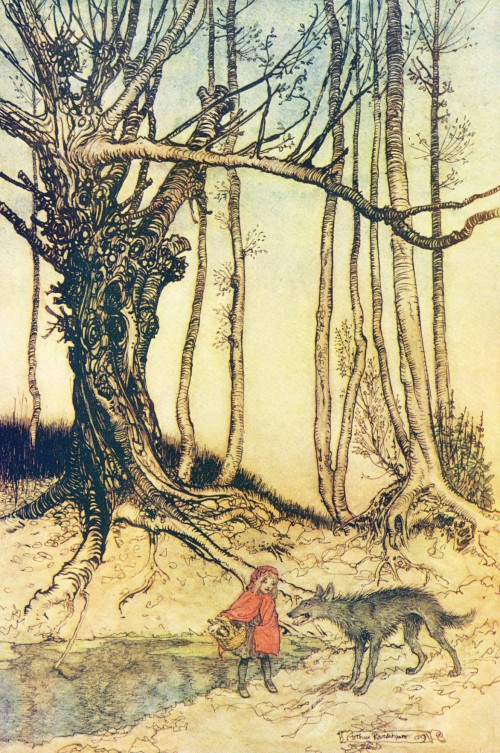
Grimm's Fairy Tales could hardly by better interpreted than by the mystery and imagery of Arthur Rackham. Rackham worked on versions of the brother's tales on more than one occasion, but his most impressive work is the sumptuous 1909 edition, published by Constable, which abounds with line drawings and colour plates.
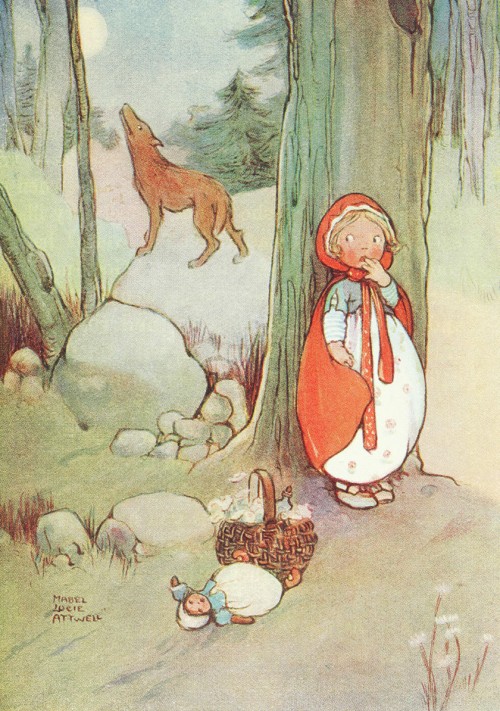
All together softer are the 1912 drawings of Mabel Lucie Attwell, who targetted her illustrations more firmly at the nursery audience.
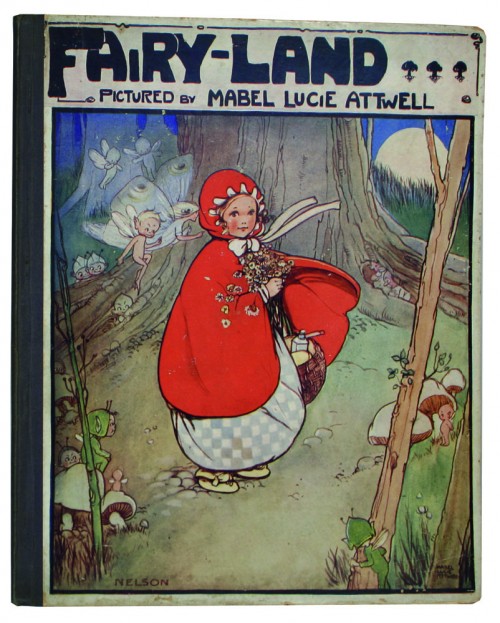
Attwell provided another illustration of Little Red Riding Hood for the cover of this Fairyland book, 1920, which strays from the more traditional telling of the story by depicting Red Riding Hood's journey thorugh a magical forest full of fairies and elfin folk.
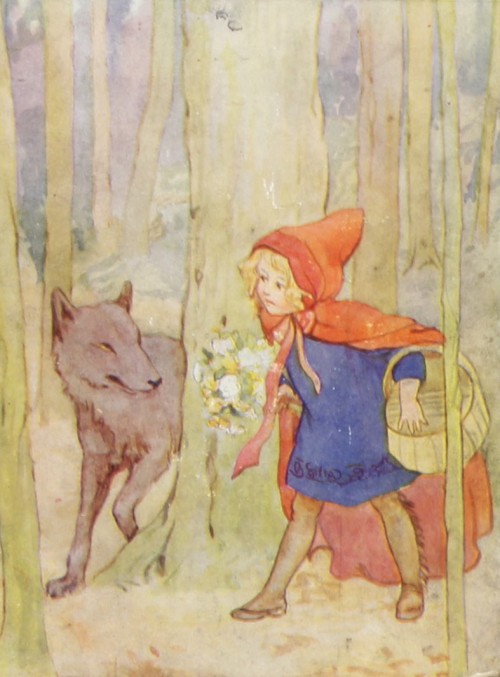
Fairy painter Margaret Tarrant illustrated a collection of fairy tales by Grimm, Andersen and Perrault in 1915 which also aimed to make the stories appeal to a younger audience, none of the eerie shadows of trees and forests for her.
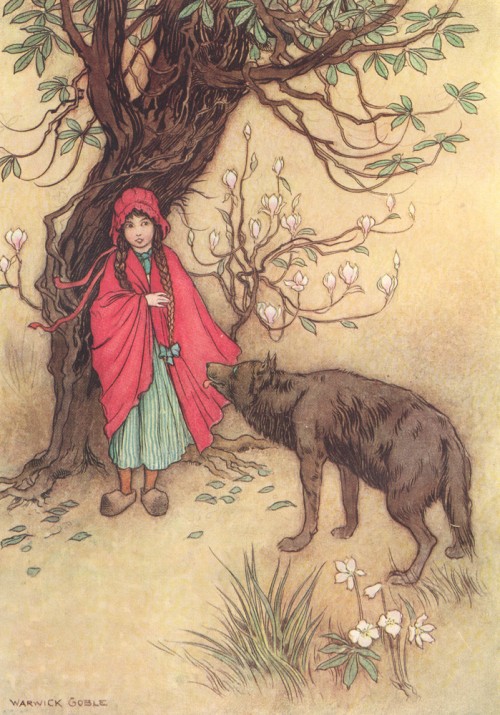
Warwick Goble's 1913 portrayal provides a more realistic look of terror on the young girl's face as she encounters the wolf. The natural beauty of the forest and it's flora as she skips happliy towards her grandmothers cottage in sharp contrast with the hungry expression of the wolf.
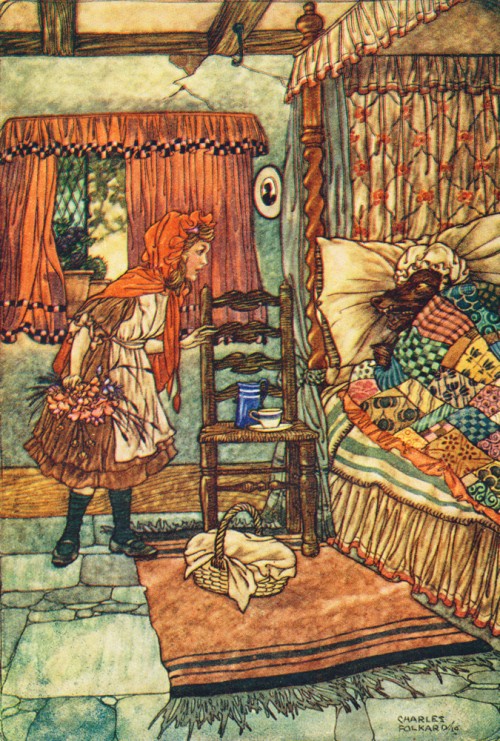
Charles Folkard illustrated Little Red Riding Hood twice, the first occasion from 1911, has attention to detail more commonly seen in the drawings of Arthur Rackham.
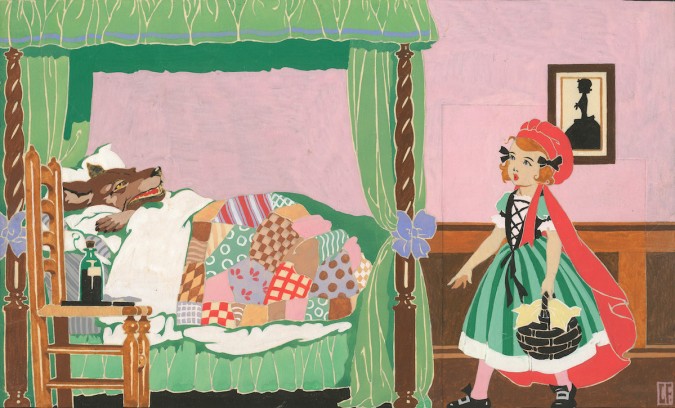
While Folkard's later version produced for a much younger reader and drawn for his Mother Goose fairy tales has a simpler style and a bolder use of pastel colours.
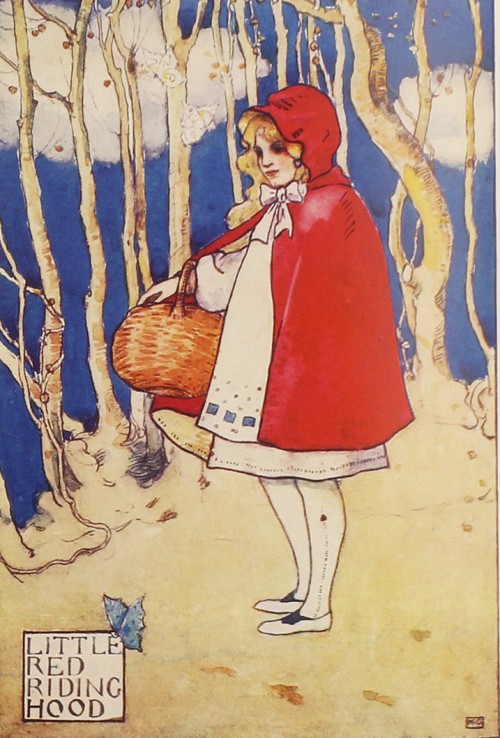
Glasgow School of Art graduate Katharine (Kate) Cameron produced a number of books of favourite fairy tales in the first decade of the 20th century, all illustrated in her distinctive syle and with the stylised lettering commonly associated with the Glasgow Arts and Crafts movement.
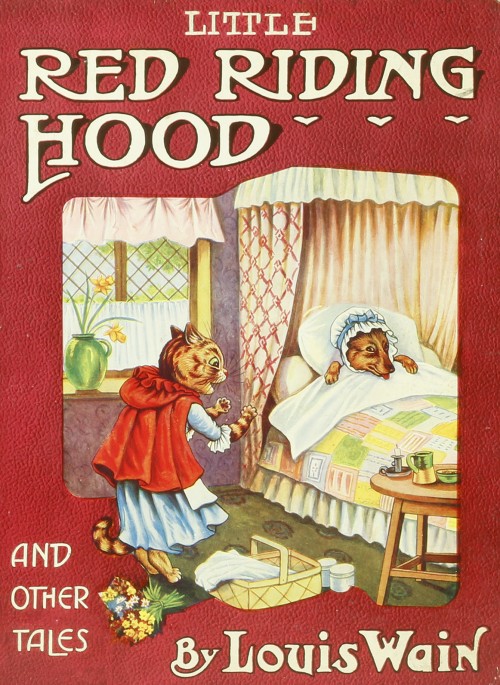
Another popular nursery illustrator who depicted Grimm's tales on a number of occasions is Louis Wain, the cat man. His verison of the classic tale sees the eonymous heroine appear in the form of a cat, no surprise therefore that the wolf is licking his lips in anticipation.
Browse more illustrations from the tales of the Brothers Grimm and remember to be wary of grandmother's whose ears look larger and hairier than you'd expect. Don't have nightmares!
Recent Posts
- The Evolution of Crime
- Tour The Bookshop On Your Screen
- The Genesis of Mr. Toad: A Short Publication History of The Wind In The Willows
- Frank Hurley's 'South'
- The "Other" Florence Harrison
- Picturing Enid Blyton
- Advent Calendar of Illustration 2020
- Depicting Jeeves and Wooster
- Evelyn Waugh Reviews Nancy Mitford
- The Envelope Booklets of T.N. Foulis
- "To Die Like English Gentlemen"
- Kay Nielsen's Fantasy World
- A Brief Look at Woodcut Illustration
- The Wealth Of Nations by Adam Smith
- What Big Stories You Have: Brothers Grimm
- Shackleton's Antarctic Career
- Inspiring Errol Le Cain's Fantasy Artwork
- Charlie & The Great Glass Elevator
- Firsts London - An Audio Tour Of Our Booth
- Jessie M. King's Poetic Art, Books & Jewellery
Blog Archive
- January 2024 (1)
- January 2023 (1)
- August 2022 (1)
- January 2022 (1)
- February 2021 (1)
- January 2021 (1)
- December 2020 (1)
- August 2020 (1)
- July 2020 (2)
- March 2020 (3)
- February 2020 (2)
- October 2019 (2)
- July 2019 (2)
- May 2019 (1)
- April 2019 (1)
- March 2019 (2)
- February 2019 (1)
- December 2018 (1)
- November 2018 (1)
- October 2018 (2)
